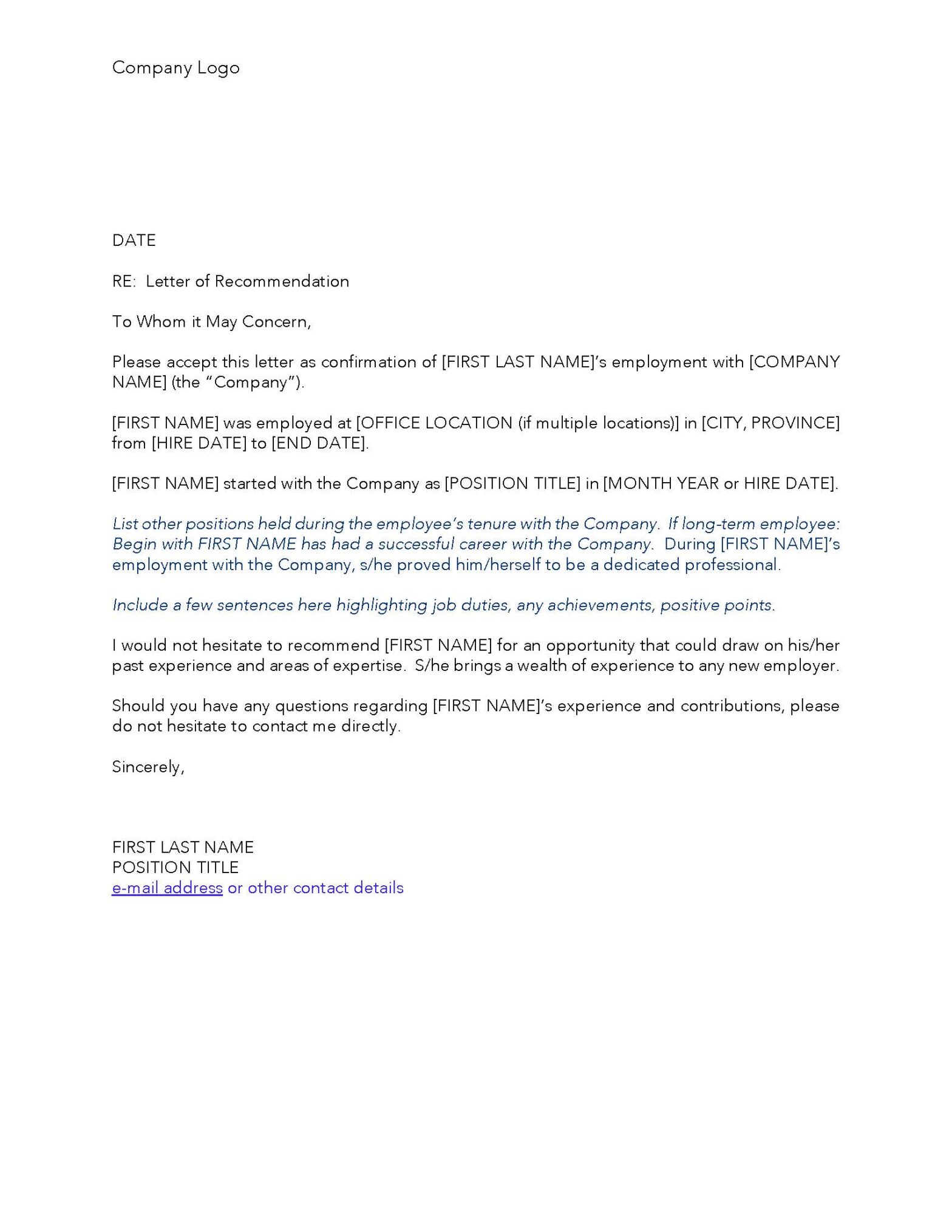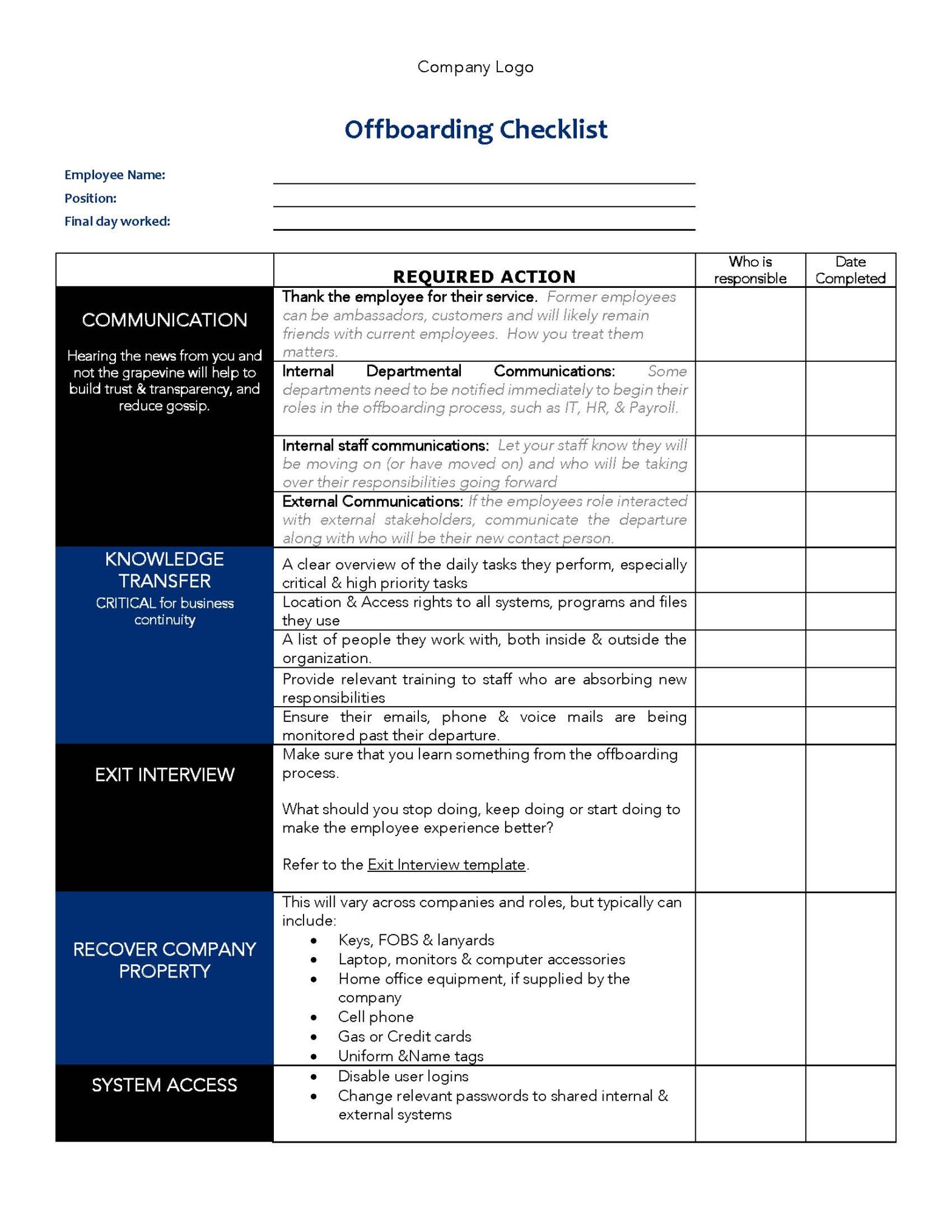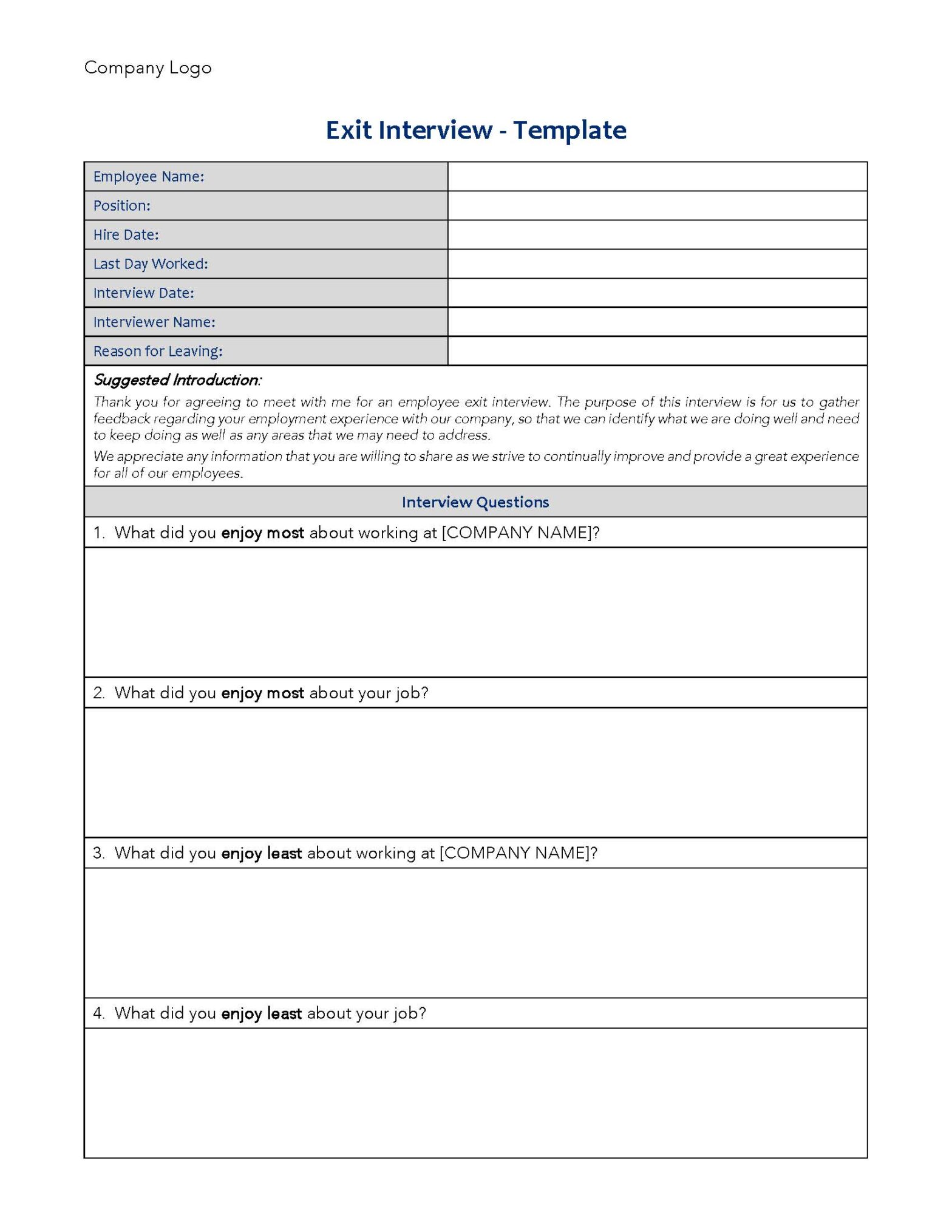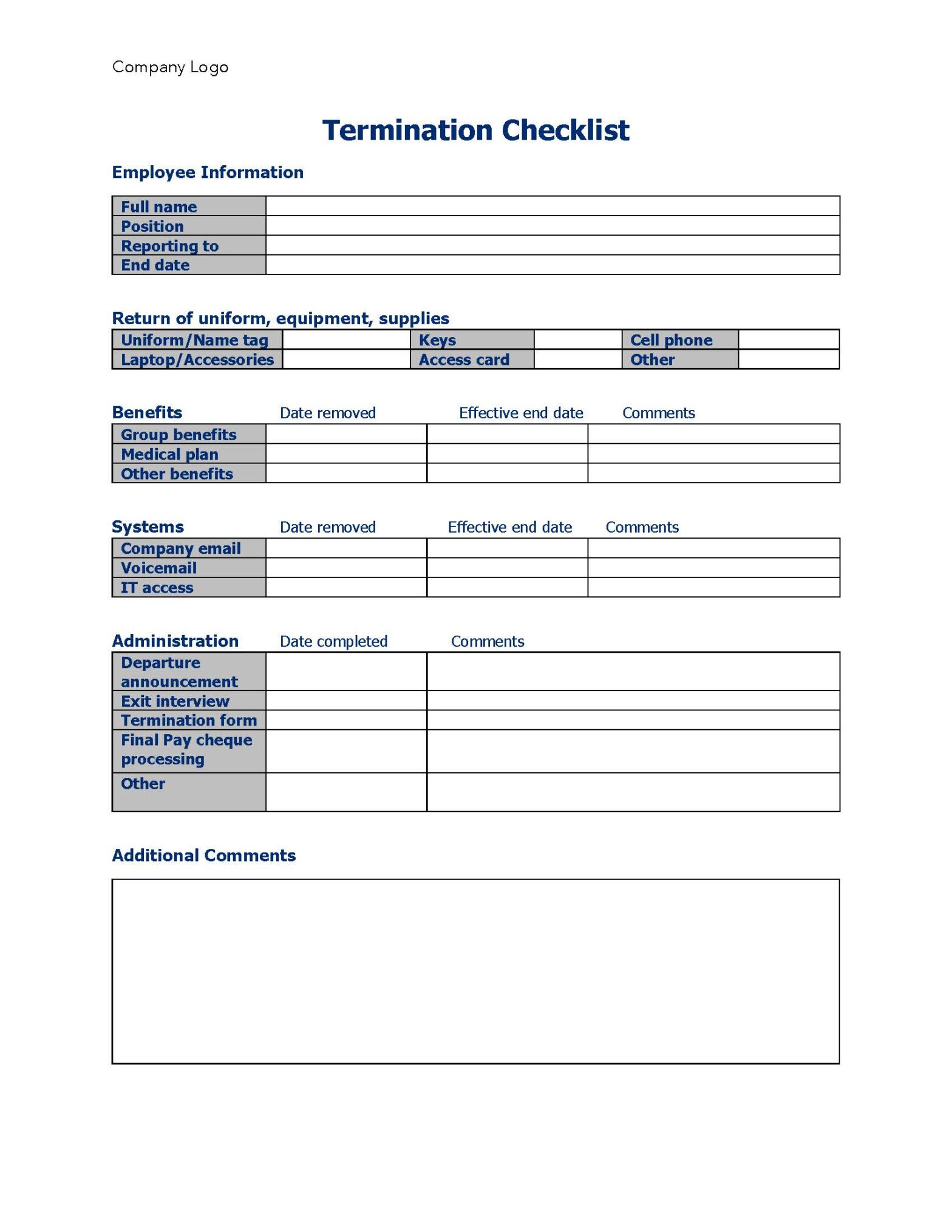Departure

Letter of Recommendation Template
A Letter of Recommendation highlights an employee’s contributions, skills, and professional qualities, supporting their next career opportunity. This template provides a structured format for confirming employment details, outlining key achievements, and offering a strong endorsement. It ensures a professional and positive reference that reflects well on both the departing employee and the company.

Offboarding Checklist Template
An effective Offboarding Checklist ensures a smooth transition when an employee leaves the organization. It helps maintain business continuity, secures company assets, and fosters a positive departure experience. This checklist covers communication protocols, knowledge transfer, system access removal, final payroll processing, and more. Proper offboarding leaves a lasting positive impression and reduces operational disruptions.

Exit Interview Template
An Exit Interview is a valuable opportunity to gather honest feedback from departing employees, helping organizations identify strengths and areas for improvement. Use this Exit Interview Template to document key insights about the employee’s experience, workplace satisfaction, and suggestions for future enhancements. Honest feedback can lead to meaningful changes that improve retention and employee satisfaction.

Termination Checklist Template
A structured termination process ensures a smooth transition for both the departing employee and the business. Use this Termination Checklist to track key steps, including returning company property, processing benefits and IT access removal, and handling final payroll. Proper documentation and an exit interview help maintain professionalism and gain valuable feedback for future improvements.

Voluntary Termination or Resignation
Employee resignations are a natural part of business, and handling them professionally is key to maintaining a positive workplace culture. Celebrate contributions, document the resignation, and conduct an exit interview to gain valuable insights. Ensure all final pay, benefits, and paperwork are processed promptly. Keeping in touch with top performers can lead to future re-hiring opportunities, saving on recruitment and training costs

Involuntary Termination: Just Cause or Without cause?
When terminating an employee, employers must determine whether it is for just cause or without cause, each requiring different legal considerations. Proper documentation, compliance with employment standards, and seeking legal guidance can help ensure a fair and legally sound termination process.

Involuntary Termination
Terminating an employee is a challenging process that should be handled with care, fairness, and legal compliance. By prioritizing dignity, clear communication, and proper procedures, employers can reduce risks and ensure a smooth transition for both the business and the departing employee.

Navigating the Employee Exit Landscape
This article from the Regional HR Consultant for Cariboo Chilcotin Coast covers voluntary and involuntary terminations, with or without cause, and the role of progressive discipline in addressing employee misconduct or performance issues before termination.

Conducting Seasonal Layoffs with Compassion
Employers can learn how to conduct seasonal layoffs with compassion with these tips and advice from our Regional HR Consultant Christie Blaquiere from Cariboo Chilcotin Coast.
Wrongful Dismissal Damages and Pension Benefits
In IBM Canada v. Waterman, the Supreme Court of Canada (“SCC”) has considered the deductibility of pension benefits from wrongful dismissal damages in a decision that may also have implications for the deductibility of other types of payments.